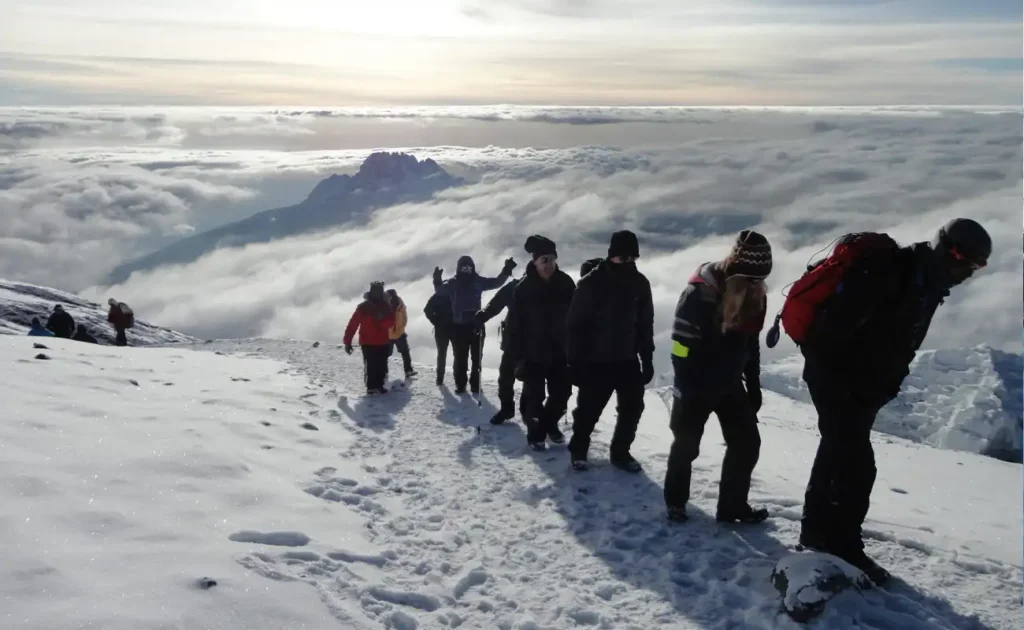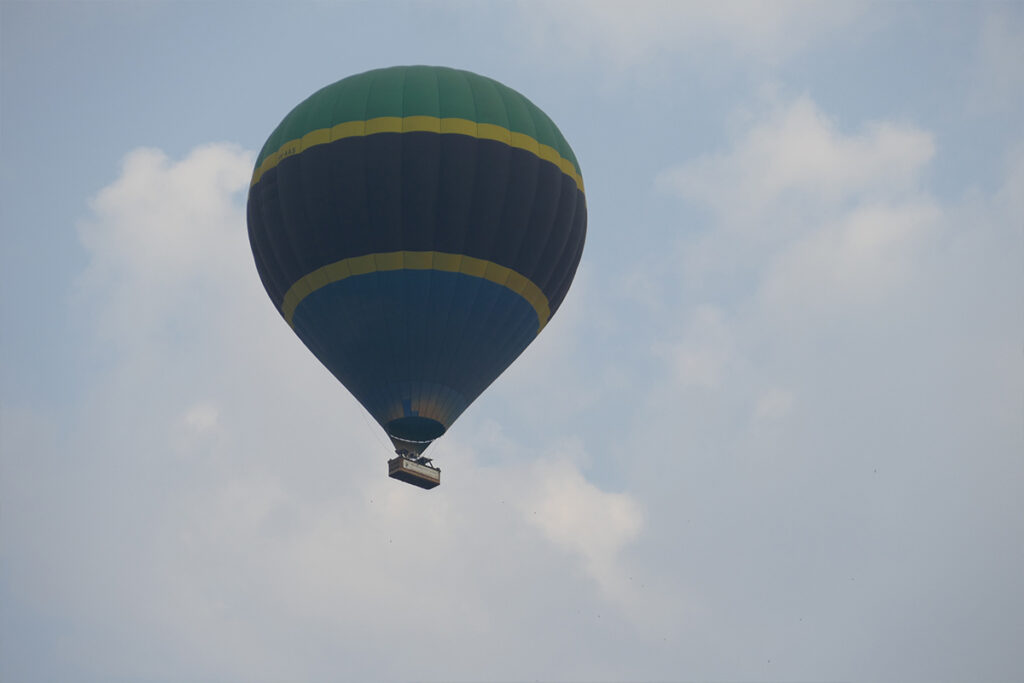Planning a safari may evoke visions of majestic landscapes, but in reality, the mere logistics can sometimes seem like navigating a herd of charging elephants. All-inclusive Tanzania safari packages have revolutionized this journey, eliminating typical hassles. Just as a local legend captures an explorer’s first awe of the Serengeti’s endless plains, these thoughtfully crafted packages capture the heart of the Tanzanian wilderness effortlessly.
These all-inclusive packages meticulously cover everything from accommodations to guided tours, embodying a tradition of excellence rooted in decades of curated experiences. Employing seasoned experts, they allow enthusiasts to fully immerse in the thrill of spotting the Big Five without worrying about arrangements. Recently, data shows a 25% increase in traveler satisfaction due to such packages, signaling a new era of seamless adventures in Tanzania’s renowned safari circuit.

All-Inclusive Tanzania Safari Packages: Stress-Free Planning
Tanzania’s all-inclusive safari packages are designed to make your adventure as smooth as the Serengeti plains. These packages cover everything you need, from accommodations and meals to guided tours. You won’t need to worry about transportation or entry fees either. By choosing these packages, travelers save time and energy they can spend watching wildlife instead. Imagine not having to handle a single detail, just soaking in the beauty of this incredible land.
An all-inclusive safari package usually includes several components that enhance the experience. Lodging is provided in comfortable camps or lodges, often set in stunning natural locations. Meals served cater to different tastes, with an emphasis on fresh and local ingredients. Guided tours are led by knowledgeable experts, ensuring you learn about the fauna and flora. This holistic approach ensures every aspect of the trip is enjoyable and educational.
The best part about these packages is the value they offer. While the initial cost may seem high, the benefits outweigh individual booking expenses. By organizing everything together, the packages often come at a discount. They also eliminate hidden costs that can surprise travelers. So, with no unexpected charges, the travel experience becomes more enjoyable and budget-friendly.
Finally, it’s important to choose the right time for your safari adventure. The dry season, from June to October, is ideal for wildlife viewing. During these months, animals gather around waterholes, making it easier to spot them. However, the wet season also offers unique experiences, like bird watching and lush landscapes. Ultimately, any time of year can unveil Tanzania’s wonders, but picking the right season enhances your trip.
Benefits of Choosing All-Inclusive Packages
All-inclusive safari packages offer a simple way to explore Tanzania without the hassle of planning every detail. These packages cover all the essentials, including lodging, meals, and transportation. This means travelers can focus more on spotting lions rather than logistics. By having everything organized, it removes the stress of booking separate parts of the trip. It turns a potentially overwhelming task into a seamless adventure.
Another advantage is the overall cost-effectiveness. When you book everything in one go, costs are often lower compared to booking each item individually. You benefit from bundled pricing which can save you money. There are often no surprise expenses, so your budget remains intact. Peace of mind is priceless when traveling in a foreign land.
Quality and variety also stand out when choosing all-inclusive packages. The services offered are usually top-notch to ensure customer satisfaction. Experienced guides accompany you on safaris, providing insight into the wildlife and ecosystem. You get the benefit of their expertise and knowledge which enriches your experience. Furthermore, the accommodations are often in prime locations with great amenities.
Additionally, all-inclusive packages provide a sense of safety and security. Knowing that you are in the hands of professionals familiar with the area enhances your comfort level. This is especially important in regions you may not know well. The convenience of having a contact person or guide to consult if issues arise is invaluable. It is essential for making the most out of your Tanzanian safari journey.
Key Components of All-Inclusive Safari Packages in Tanzania
All-inclusive safari packages in Tanzania come packed with essential components that enhance the experience. The first key component is the accommodation. Stays are typically booked in luxurious lodges or eco-friendly campsites nestled right in the heart of nature. They provide you with a comfortable base while keeping you connected to the wild. Many of these lodges offer stunning views and modern amenities.
Next is the transportation, which includes airport transfers and safari drives. You don’t have to worry about navigating unfamiliar roads. Professional drivers and safari guides manage all your travel needs. Many packages provide 4×4 vehicles equipped for off-road adventures. This ensures a safe and thrilling journey through diverse landscapes.
Also included are meals that cater to a variety of tastes and dietary preferences. These meals often highlight local cuisine, giving you a taste of Tanzanian culture. Dining arrangements can range from bush picnics to lodge-based fine dining. Meals are usually included in the package price. This allows you to enjoy hearty meals without concern about additional costs.
Guided tours and activities form another critical part of the package. You’ll have access to experienced guides who can offer insights into the wildlife and local ecosystems. Activities range from game drives to walking safaris. These experiences are designed to ensure a well-rounded adventure. Your itinerary is curated to make the most of your time in Tanzania.
Choosing the Right Time to Visit Tanzania
The decision of when to visit Tanzania is crucial to making the most of your safari experience. Tanzania experiences two main seasons, the dry and wet seasons, each offering unique experiences. The dry season, running from June to October, is considered the best time for wildlife viewing. During this period, animals gather around water sources, making them easier to spot. The weather is also more comfortable with cooler temperatures.
The wet season is divided into two parts: the short rains, from November to December, and the long rains, stretching from March to May. While the wet season might seem less ideal, it offers its own perks. The landscape becomes lush and green, attracting a wide variety of bird species. It’s also a great time for fewer tourist crowds. Some lodges offer reduced rates, making it budget-friendly.
For those interested in witnessing the Great Migration, timing is particularly important. This spectacular event occurs throughout the year as millions of wildebeests move in search of fresh grass. From June to September, they gather in the northern Serengeti. In December and January, they’re typically found in the southern Serengeti, calving season in full swing.
Mount Kilimanjaro climbers will find the best conditions during the dry seasons. Clear skies and manageable weather enhance the climbing experience. Both January to March and June to October are popular climbing windows. The paths are less muddy, boosting safety and enjoyment. This planning ensures trekkers can appreciate the stunning vistas.
For a beach holiday on Zanzibar’s stunning shores, the dry season is preferred. Sun-seekers can enjoy relaxing days on the beach with minimal rain. The warm Indian Ocean waters perfect for swimming and diving. Whether it’s a safari or beach relaxation, choosing the right time enhances your journey. By aligning your trip with your interests, you ensure the vacation of a lifetime.
What to Expect During Your Safari Adventure
Embarking on a safari adventure in Tanzania is a journey through some of the most breathtaking landscapes on earth. You’ll likely travel in a robust 4×4 vehicle, perfect for the rugged terrain. These rides can be bumpy but offer an authentic experience. Your guide will be an expert in tracking and identifying animals. Be ready to spot lions, giraffes, elephants, and more in their natural habitat.
Mornings usually start early in the cool dawn hours. This is the best time to observe wildlife, as animals are most active during cooler parts of the day. Breakfasts are hearty, often served in the bush for a unique dining experience. You’ll continue game drives throughout the morning, with breaks for snacks. Afternoons are for rest and exploration back at your lodge.
As you travel, expect to see the diverse landscapes of Tanzania, from the vast Serengeti plains to the lush Ngorongoro Crater. These areas are home to various ecosystems and countless animal species. Guides provide insights into how these systems work and the roles different animals play. It’s not just about seeing animals but understanding the intricate web of life they belong to. This helps in appreciating the true beauty and complexity of nature.
Evenings on safari bring their own magic. Often, you’ll gather for a sunset viewing, a time to enjoy the sky’s brilliant colors. Night drives may be an option, offering a chance to see nocturnal animals. Back at camp, dinner is usually a social affair. Sharing stories around a campfire enhances the adventure. It’s an opportunity to reflect on the day’s sightings under a sky studded with stars.
Being flexible and open-minded will enhance your safari experience. Wildlife sightings can’t be guaranteed, but every moment offers something special. Besides big mammals, look for smaller creatures and colorful birds. Every creature plays a role in the ecosystem, adding richness to your experience. Embracing it all ensures a rewarding adventure.
Planning Tips for First-Time Visitors
Visiting Tanzania for the first time can be an exhilarating experience, but a little planning goes a long way. It’s essential to pack light but bring the right essentials. Items like comfortable clothing, sturdy shoes, and sun protection are must-haves. Don’t forget a good pair of binoculars for spotting wildlife. A camera with extra memory cards will help capture unforgettable moments.
Health and safety are important considerations. Make sure to get your vaccinations well in advance. Malaria prophylaxis is often recommended, so consult your doctor. Carry a basic first-aid kit with essentials like band-aids, antiseptic, and any personal medications. Staying hydrated is crucial, especially during game drives. Always drink bottled or purified water to avoid stomach issues.
Choosing the right time to visit makes a big difference in your experience. The dry season from June to October is ideal for wildlife viewing. However, the shoulder seasons can also offer unique experiences with fewer crowds. Book your accommodations and safari tours early to secure the best spots. Consider travel insurance that covers medical expenses and trip cancellations.
Understanding the local culture and customs can enhance your visit. Learning a few Swahili phrases can go a long way in connecting with locals. Respecting local traditions and dressing modestly when visiting villages is appreciated. Tipping guides and staff is customary. A typical tip ranges from $10 to $20 per day for guides and $5 to $10 per day for camp staff.
Lastly, be prepared for varied weather conditions. Tanzania’s climate can range from hot and sunny to cool evenings. Layered clothing works well to adjust to temperature changes. Lightweight, breathable fabrics are recommended for comfort. Packing versatile items ensures you’re ready for any weather. These tips will help make your first Tanzanian safari both smooth and memorable.
Key Takeaways
- All-inclusive packages simplify planning with everything in one place.
- Enjoy expert-led tours and top-notch accommodation easily.
- Saves time, so you focus on the adventure.
- No surprise costs, making budgeting simpler.
- Get seamless access to Tanzania’s stunning wildlife scenes.



